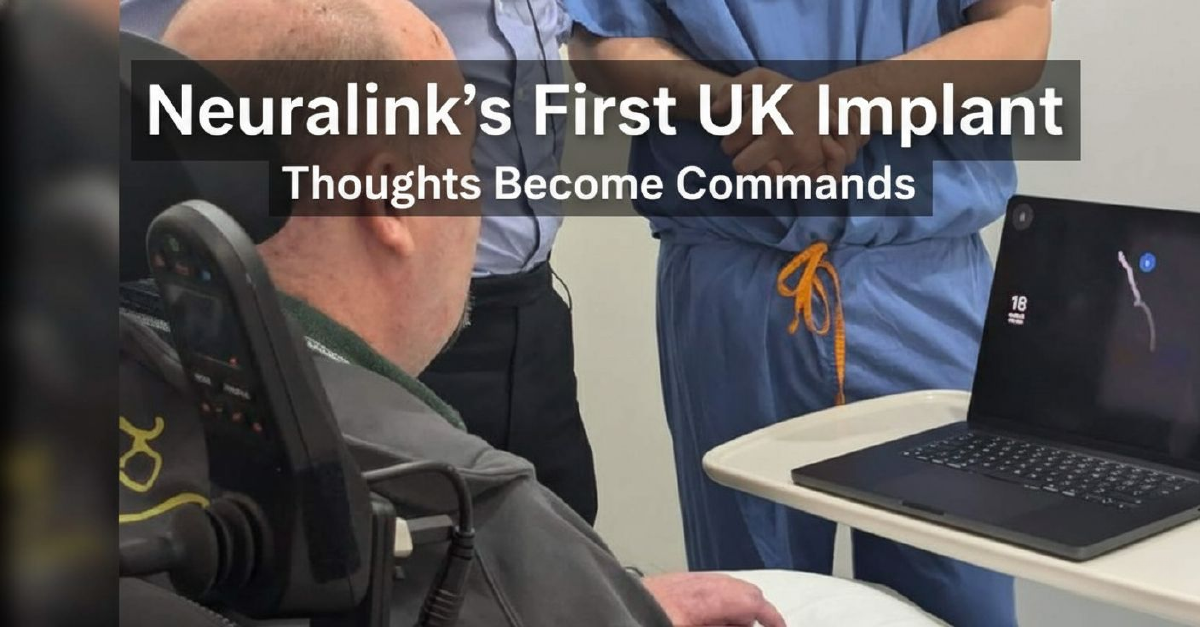Neuralink just completed its first UK brain chip implant, and the results came fast. Hours after surgery at University College London Hospitals, a patient named Paul was moving a computer cursor with his thoughts.
Paul has motor neurone disease. The N1 Implant is part of the GB-PRIME study evaluating whether Neuralink’s brain-computer interface can help people with severe neurological conditions regain independence. Within a day of the procedure, Paul was home, working with Neuralink engineers to explore what the device could do for his daily life.
The Technology Is Real#
This isn’t a demo or a controlled lab test. It’s a person with a degenerative disease using thought alone to interact with technology in a meaningful way. The speed of progress is striking—what took months in early trials now happens in hours.
Brain-computer interfaces aren’t science fiction anymore. They’re entering clinical reality, moving from US-based trials to international expansion. That’s a sign of confidence in the technology’s viability.
The Questions We Should Ask#
The promise is clear: restored autonomy for people living with paralysis, communication for those who’ve lost their voice, independence where it was stolen by disease or injury. That matters.
But we should think beyond the medical breakthrough. Who gets access to this technology? At what cost? What happens when implants need maintenance or upgrades? As these devices become more sophisticated, what data do they collect, and who controls it?
Neuralink’s UK success is impressive. The technology works. Now we need to figure out how we want to live with it—who benefits, what it costs, and what happens when our thoughts literally interface with machines.
The future Paul is experiencing today will eventually become someone else’s ordinary. We should make sure it’s a future we’ve chosen thoughtfully, not just one that arrived because the technology was possible.
Learn more: Read about the GB-PRIME study at UCLH’s official announcement.


